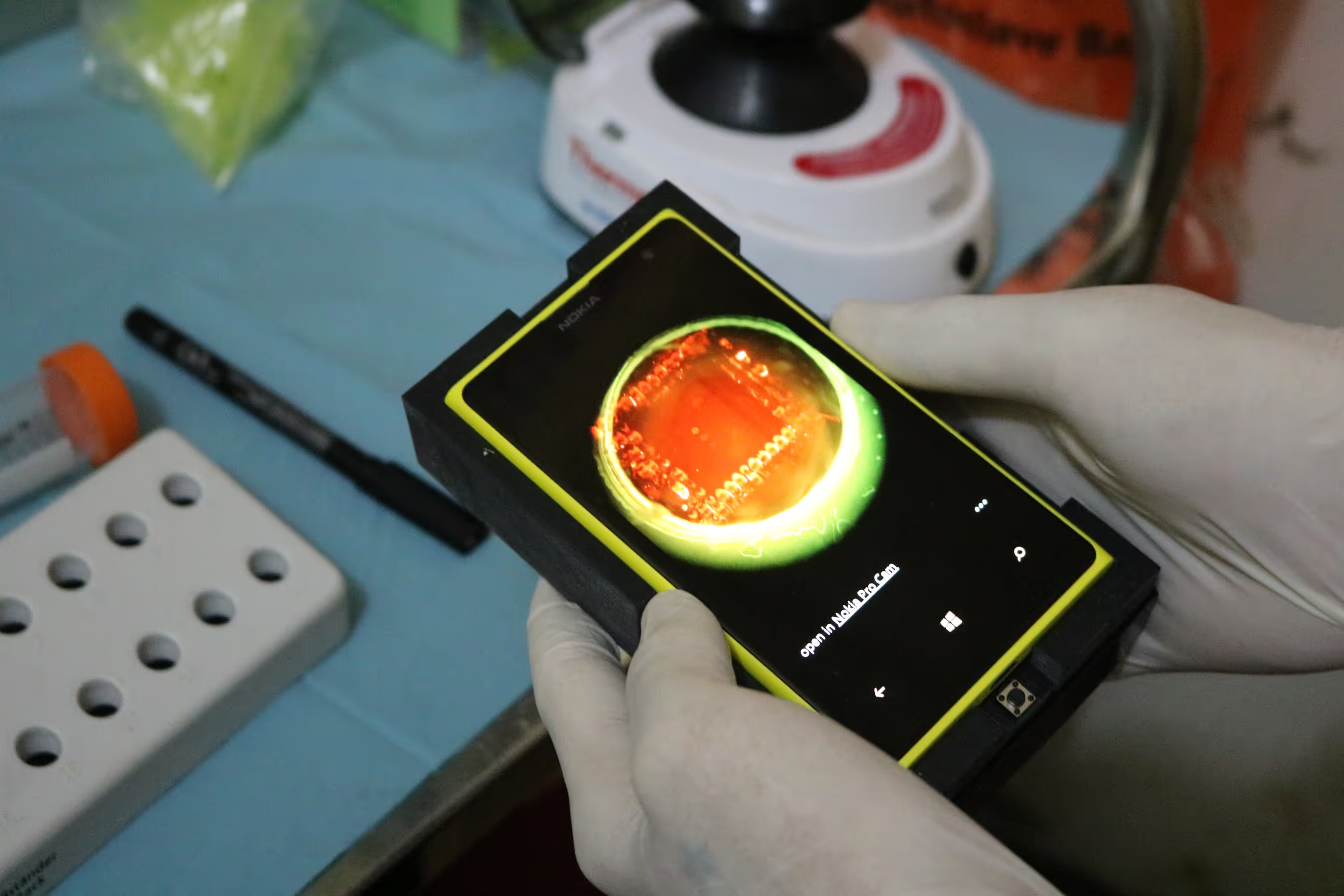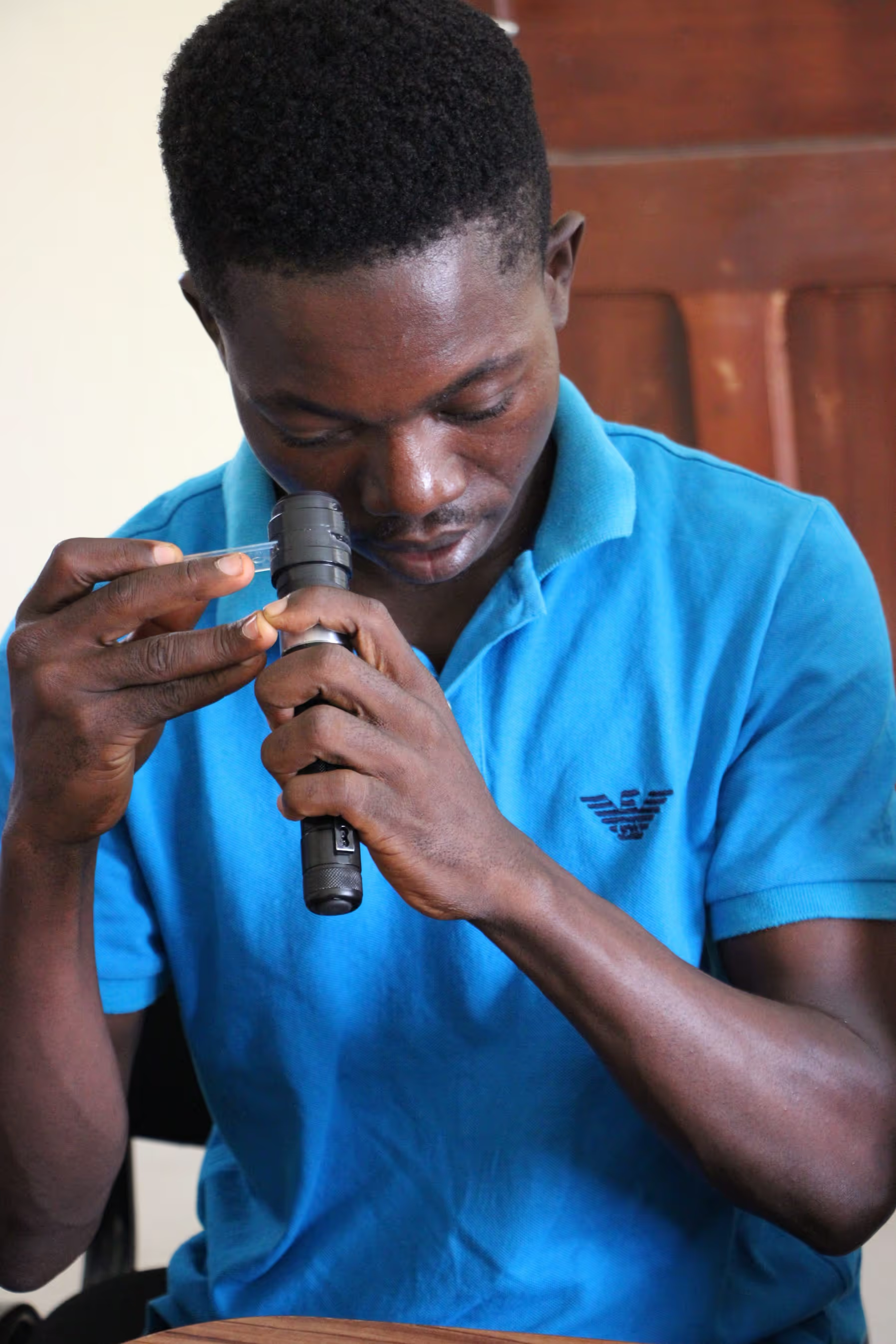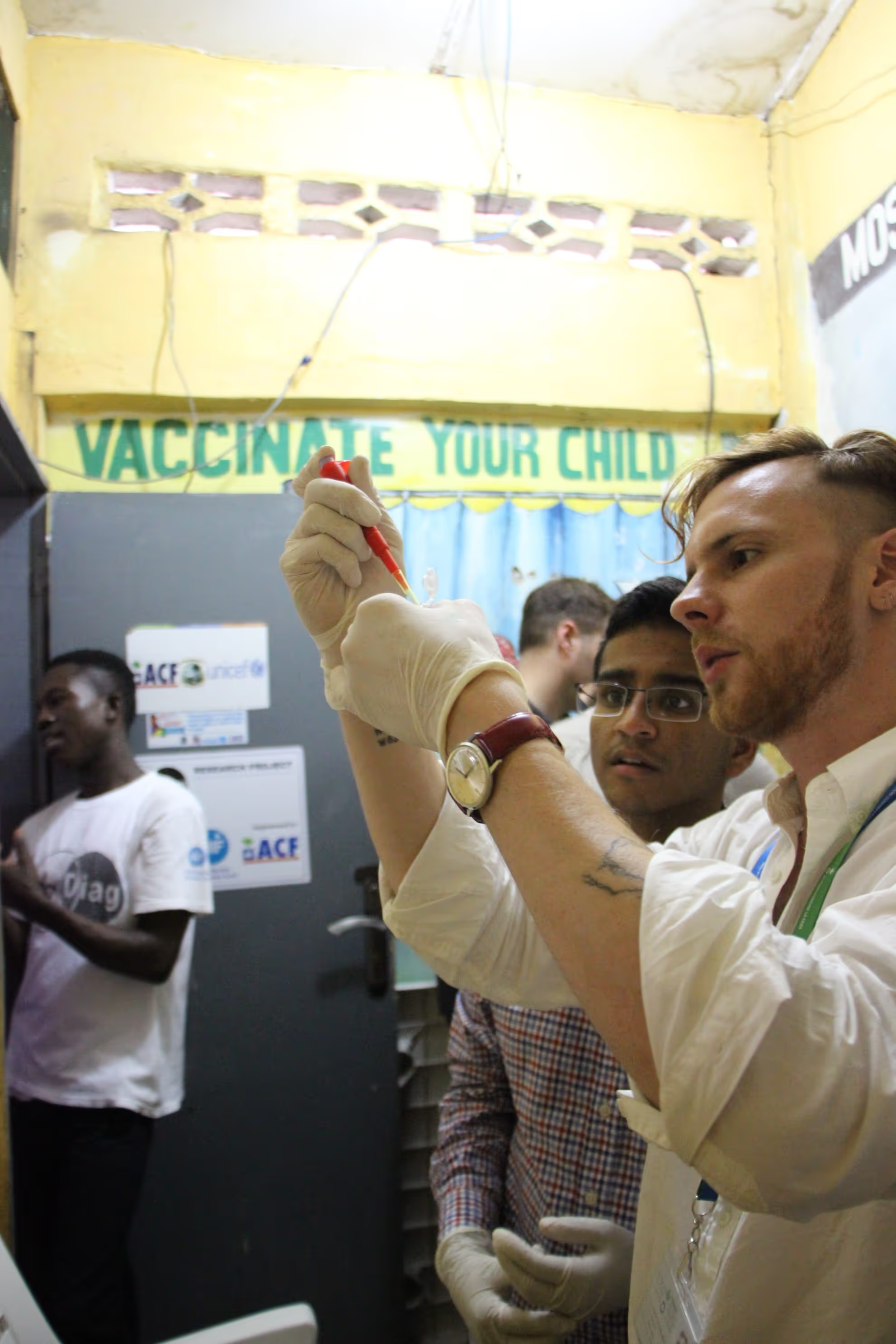Five Days of Fieldwork (Part 2)

This is part two in a two-part blog series. You can catch up on part one here.
TRIALS AND TRIUMPHS
Joh and Hucknall were led down a dark hallway to a room in the back of the clinic, where posters from Action Contre La Faim (ACF) illustrating symptoms of malnutrition were nailed to the wall. A large wooden desk was in the middle of the room, facing away from a barred window that peered back into the clinic.
“You guys can set up your stuff here. I’ll be back to bring you more samples as our patients come in,” Trenton said, leaving the room to help the staff with measurements.
;

The D4 assay uses a matched pair of antibodies to detect and capture leptin in a biological sample. The array contains two types of antibodies – immobilised capture antibodies and soluble detection antibodies – which are tagged with a fluorescent marker to allow the researchers to identify how much leptin is present. When a drop of blood is placed on the slide, the detection antibodies dissolve, separate from the array and bind to the leptin in the blood. These fluorescing antibody-leptin pairs then attach to the capture antibodies that are still on the slide.
Initially, the team had packed 250 samples of the test, but during verification testing at ACF headquarters, they realised something was wrong. “When we read the slides with the smartphone detector, you should be able to see quantum dots, and those will tell you how much leptin is present in the sample,” says Jay Gupta, a sophomore studying biomedical engineering at Duke and the third member of the Chilkoti lab in Liberia for the field test. “But when we tested the slides we found that most of the tests we packed remained blank, where control dots didn’t even show a reaction.”

The malfunction may have been caused by the drastic flux in temperatures during the assays’ journey from the USA to the cold cargo hold to Liberia, or by the difference in humidity between Liberia and the laboratory environment at Duke—but it was clear something had interfered with the activity of the biological reagents on the slides.
After testing more samples from the remaining boxes, the team found that two boxes of assays still worked, though the results were faint.
“We anticipated that there would be problems during these field tests,” says Chilkoti. “This iteration of design-build-test-modify and test again is inherent in all tech development, and it’s even more critical when the technology is made for demanding environments where point-of-care tests are used.”
Dailey-Chwalibóg returned with a blood sample from a child who has been recruited into ACF’s OptiDiag project, a study designed to describe and compare the vulnerability of severe acute malnutrition (SAM) patients based on their diagnostic category (MUAC, z-score or both).

Joh snapped on the gloves and took the sample. After separating the serum from the blood, he applied it onto one of the D4 slides. Children peered into the room from the barred window behind Daniel, watching with curiosity as he worked. After an hour passed, Joh rinsed off the slide in the buffer solution before handing it to Angus, who plugged the slide into the phone attachment and turned on the camera. Although the quantum dots were faint, they were visible.
“I think we’ll get a better reading using the tabletop scanner,” Joh said as he examined the photo. They planned to send the completed assays back to Duke where they could read them with the stronger scanner to get more accurate results.
Once they finished the first slide, Joh and Hucknall cleaned up and prepared to run a second test while they waited for another sample.
FAREWELL
After a morning of collecting samples from children at the Slipway Clinic across the Mesurado River, Gupta joined Hucknall and Joh at the Redemption Clinic, where he helped run more D4 assay tests. They worked efficiently in a small ACF storeroom, holding vials up to the light to pipette the serum.
Over the next three days, the team continued their work in this manner, with Hucknall, Joh and Gupta travelling to Redemption to test the assays. The novel tests might not have worked as the team intended, but they did have a better understanding of the parameters where these diagnostic tests were needed.
“Even the initial issue with the antibodies on the assay taught us a lot,” Joh said on the last day in Liberia. “The test won’t be useful to anyone if we can’t safely ship it, so it’s good for us to know and address.”
For Chilkoti, the field test provided the team with an important opportunity to test their technology for any weak links or critical issues.
“Now that we’ve had a chance to identify problems, this test gives us the confidence and critical information we need to make crucial modifications to the technology that we are hopeful will lead to success in the next round of field testing,” says Chilkoti.
As everyone said their final goodbyes there was already a discussion about how to improve the assay’s design for the next trip.
“We’re bringing samples back to Duke and we’ll conduct a lot of experiments to see what went wrong with the sensitivity on the slides, but this trip showed us how this tool could be implemented in resource-limited settings,” said Joh.
With their work complete and their bags packed, Gupta, Hucknall and Joh said goodbye to Dailey-Chwalibóg and Kemokai back at ACF Liberia base. “I’m sure we’ll see everyone soon,” Trenton said before everyone piled into the car that would take them back to the airport. “It’s great to see the progress on this.”
“Definitely,” said Joh. “But there is always more to do.”
Author: Michaela Kane
Stay updated
Sign up for our newsletter to receive regular updates on resources, news, and insights like this. Don’t miss out on important information that can help you stay informed and engaged.
Explore Elrha
Learn more about our mission, the organisations we support, and the resources we provide to drive research and innovation in humanitarian response.